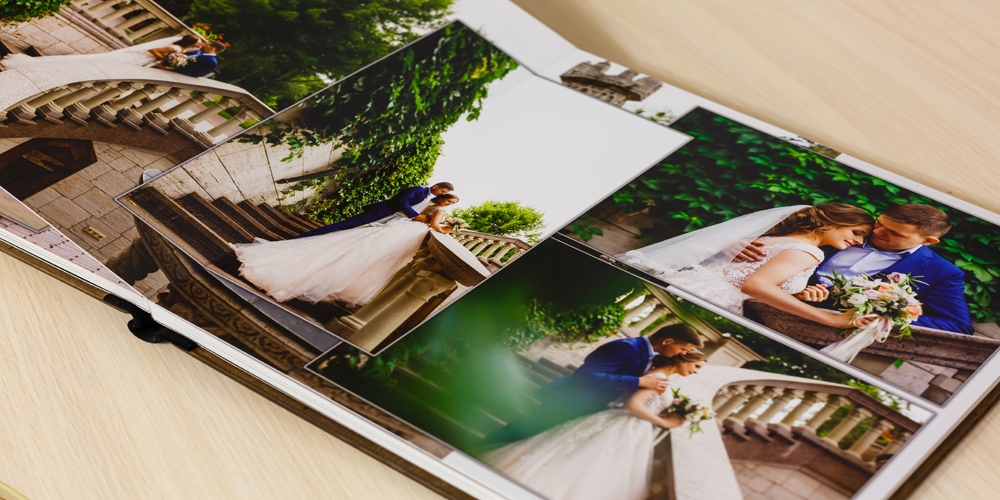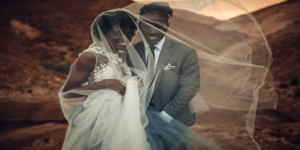Wedding Photography: Creating Timeless Memories
Introduction to Professional Wedding Photography
Weddings are once-in-a-lifetime events where every moment holds immense sentimental value. Professional wedding photography serves as the vessel through which these precious memories are immortalised. Capturing timeless wedding memories ensures that the love, joy, and excitement of the day are preserved not just for the couple, but for generations to come.
A skilled wedding photographer not only documents the sequence of events but also encapsulates the essence of the day’s emotions. From the nervous anticipation before the ceremony to the revelry of the reception, each image becomes a treasured keepsake, allowing couples to relive their special day. Through high-quality photography, these moments are frozen in time, creating a visual narrative that remains vivid and emotive for years.
Role of Professional Photography in Preserving Wedding Day Emotions
The art of wedding photography extends beyond the technical aspects of taking pictures. It involves a deep understanding of human emotions and relationships. A proficient wedding photographer must be adept at capturing fleeting moments that convey genuine emotions.
From the tearful smiles during vows to the laughter shared over a heartfelt speech, professional photography showcases the emotional landscape of a wedding day. The photographer’s ability to anticipate and capture these candid moments is pivotal in preserving the true spirit of the event. These images become a testament to the love and bond shared by the couple and their families, carrying sentimental value that transcends the passage of time.
Balance Between Traditional and Contemporary Photography Styles
Wedding photography is a dynamic field, constantly evolving to embrace new trends while honouring traditional practices. Striking a balance between traditional and contemporary photography styles is essential in creating a comprehensive wedding album.
Traditional photography focuses on posed portraits and formal group shots, providing a structured chronology of the event. These images are timeless and offer a classic representation of the wedding day. Contemporary photography, on the other hand, emphasises creativity and spontaneity. It seeks to capture the unconventional moments and the distinctive personality of the couple, often employing unique angles and artistic compositions.
A professional wedding photographer must possess the versatility to blend these styles seamlessly. This approach not only guarantees an aesthetically diverse collection of images but also resonates with couples who appreciate both the reliability of traditional photos and the flair of modern photography.
By mastering these elements, photographers can ensure that wedding memories are not only preserved but also celebrated through an enduring blend of elegance and innovation.
Essential Equipment and Technical Preparation
Professional Camera Gear and Backup Equipment Requirements
A professional wedding photographer must be equipped with high-quality camera gear to ensure exceptional image quality. Key components include a full-frame sensor camera body for optimal performance in low light and enhancing image detail. It is advisable to have a secondary camera body as a backup to prevent any downtime due to a malfunction.
Lenses play a pivotal role in capturing a variety of shots:
- Prime lenses: Known for their sharpness and wide apertures, they are essential for portrait photography and low-light environments.
- Zoom lenses: These are indispensable for capturing distant moments without sacrificing quality, offering versatility in constantly changing wedding scenarios.
Additional critical gear includes a reliable tripod for stability during long exposures and steady shots, and an external flash system to manage lighting when natural light is insufficient or overly harsh.
Lighting Setup for Indoor and Outdoor Venues
Lighting setup is a crucial aspect of wedding photography, significantly influencing the outcome of images both indoors and outdoors.
Indoor Lighting
Indoor settings can pose various challenges due to differing light sources and intensities. Employ the following techniques:
- Off-camera flash: Enables control over lighting direction, reducing shadows and highlighting the subject effectively.
- Bounce flash: This technique diffuses light by bouncing it off walls or ceilings, creating a natural and soft lighting effect.
- Continuous lighting: LED panels or other continuous light sources provide a steady light, which can be adjusted in real-time, proving beneficial in dimly lit venues.
Outdoor Lighting
Outdoor photography is heavily dependent on natural light conditions which can be unpredictable. Here are some strategies:
- Reflectors: Useful in directing and softening sunlight, helping to illuminate subjects evenly.
- Diffusers: Mitigate the intensity of direct sunlight, preventing washed-out images and harsh shadows.
- Portable softboxes: These can provide consistent lighting in various outdoor conditions, ensuring the subject is well-lit.
Technical Considerations for Different Wedding Environments
Various wedding venues present unique challenges that necessitate specific technical considerations. Indoor church ceremonies might have low light, necessitating a high ISO setting and a fast lens with a wide aperture to maintain image quality without noise.
Conversely, outdoor garden weddings often present high contrast lighting conditions, demanding careful exposure management and possibly the use of neutral density (ND) filters to balance the light. Understanding the venue’s lighting conditions ahead of time allows for appropriate gear selection and preparation.
Careful technical preparation and equipment management ensure that a professional wedding photographer is always poised to capture the significant moments of a wedding day flawlessly.
Pre-Wedding Photography Planning
Consultation with Couples to Understand Their Vision
One of the foundational elements of pre-wedding photography planning is having a detailed consultation with the couple. During this meeting, the photographer’s primary goal is to understand the couple’s vision for their wedding day photography. This consultation allows the photographer to learn about the couple’s style preferences, special moments they wish to capture, and any specific requests they may have.
Professional wedding photographers often bring a portfolio to these meetings, showcasing different styles such as traditional, contemporary, and photojournalistic approaches. This helps the couple articulate their desires more clearly. Understanding the couple’s expectations helps in tailoring the photography plan to suit their unique personalities and the narrative they wish to tell through their wedding photos.
Scouting Wedding Venues for Optimal Shooting Locations
Another critical component of pre-wedding planning is scouting the wedding venues. This involves visiting both the ceremony and reception locations prior to the wedding day. The intent is to identify the best spots for taking photographs, considering factors such as lighting, background, and space constraints.
When scouting locations, photographers should note the position of natural light sources and any artificial lighting that will be used. This helps in planning for the appropriate lighting equipment to bring. Additionally, photographers should look for picturesque or significant areas within the venue that will enhance the couple’s portraits and group photos. Early scouting also allows the photographer to anticipate and solve potential challenges, ensuring a smoother workflow on the wedding day.
Creating a Comprehensive Shot List and Timeline
A well-structured shot list and timeline are essential for capturing all the key moments of the wedding. After the initial consultation and venue scouting, the photographer creates a detailed shot list. This document outlines all the must-have photographs, from bridal preparations to the first kiss, and key moments during the reception.
The timeline coordinates with the wedding day schedule, ensuring that no crucial moment is missed. It allocates specific time slots for different parts of the day, such as family portraits, couple sessions, and candid shots. This systematic approach helps in managing time effectively, reducing stress for both the photographer and the couple, and ensures a comprehensive coverage of the wedding day.
With these foundational steps in place, the photographer is well-prepared to capture every significant moment, weaving together a narrative that reflects the couple’s unique journey.
Capturing Key Wedding Moments
Essential Bridal Preparation and Detail Shots
Capturing the bridal preparation and detail shots is fundamental in professional wedding photography, as it sets the tone for the rest of the day. Focus on photographing the bride’s dress, shoes, jewellery, bouquet, and other significant accessories. These close-up shots require a macro lens or a prime lens with a wide aperture to highlight intricate details and create a beautiful bokeh effect in the background.
Next, document the bride’s transformation as she gets her hair and makeup done. Use natural light where possible, positioning the bride near a window for soft, flattering light. In darker rooms, employ an off-camera flash with a diffuser to maintain a natural look. Don’t overlook candid moments of interactions between the bride and her friends or family, which add genuine emotion to the collection.
Ceremony Photography Techniques and Positioning
During the ceremony, capturing the essence of the moment is paramount. Plan your positioning to avoid obstructions and anticipate key moments such as vows, ring exchange, and the couple’s first kiss. Use a telephoto lens to capture intimate expressions without intruding on the ceremony.
Balancing ambient light with artificial light can be challenging. Aim for minimal flash use during the ceremony to maintain the ambiance and avoid distractions. If flash is required, use a bounce flash to soften the light and avoid harsh shadows. Position yourself strategically to capture different angles, such as behind the officiant to show the couple’s expressions and the guests’ reactions.
Reception Coverage and Candid Moment Documentation
The reception is a time for joy, laughter, and celebration, making it ripe for candid photography. Focus on the bride and groom’s grand entrance, first dance, speeches, and cake cutting. Use a wide-angle lens to capture the atmosphere and the room’s decor in a single frame.
Lighting can be variable during receptions, often involving coloured lights and dim settings. Adjust your camera’s ISO and aperture appropriately and use an on-camera flash with a diffuser if necessary to maintain quality images. Document spontaneous moments—guests laughing, children playing, and emotional interactions. These candid shots add depth and authenticity to the wedding album.
The seamless transition from pre-wedding planning to capturing key moments ensures that every significant detail of the couple’s special day is documented with care and precision. This comprehensive approach not only manages expectations but also ensures a cohesive and memorable collection of wedding photographs.
Indoor and Outdoor Photography Techniques
Managing Different Lighting Conditions
Successfully managing lighting conditions is paramount in both indoor and outdoor wedding photography. Indoor venues often present challenges such as low light and mixed lighting, which can affect the colour temperature in photos. To tackle these, photographers should:
- Utilize external flash systems with diffusers to soften the light and prevent harsh shadows.
- Use reflectors to bounce natural or artificial light onto the subjects.
- Adjust camera settings, such as increasing ISO for brighter images without losing too much detail.
- Employ continuous lighting equipment where necessary to ensure a consistent light source.
Outdoor lighting, while generally more abundant, can be unpredictable due to changing weather and lighting conditions throughout the day. Techniques to manage these include:
- Shooting during the “Golden Hour,” when the light is softer and more flattering.
- Using fill flash to correct backlit scenes or when shadows are too harsh.
- Employing neutral density filters to control the amount of light entering the lens without affecting the colour balance.
Composition Strategies for Various Settings
Proper composition is key to creating visually appealing photographs that capture the essence of the wedding day. Different settings call for different strategies:
- Ceremonies: Symmetry and leading lines can draw attention to the couple, while framing the couple with the archway or floral arrangements adds depth to the composition.
- Receptions: Wide-angle lenses can capture the atmosphere, while zoom lenses allow for candid shots of guests to capture genuine expressions.
- Detail Shots: Close-ups of rings, flowers, and invitations should be taken with a shallow depth of field to emphasise the subject and blur the background.
It is also beneficial to observe the rule of thirds, where the main subjects are placed off-centre to create balance and interest.
Weather Contingency Planning for Outdoor Shoots
Weather can be unpredictable; hence, having a contingency plan is essential:
- Rainy Conditions: Carry waterproof covers for cameras and gear, and scout indoor or sheltered locations beforehand for an impromptu shoot.
- Bright Sunlight: To avoid harsh shadows, use diffusers, shoot in shaded areas, or under cloud cover.
- Windy Weather: Secure tripods and consider the positioning of the couple to prevent wardrobe mishaps; take the wind direction into account when posing.
By planning and adapting to the weather, photographers can ensure that they are prepared for any situation, maintaining the quality and consistency of the photographs.
Group Photography Management
Organising Formal Family Portraits Efficiently
Family portraits are a cherished part of any wedding album. Organising them efficiently requires methodical planning and effective communication. Begin by collaborating with the couple well in advance to create a comprehensive list of family combinations they desire. This ensures that no important family configurations are missed.
On the day of the wedding, designate a specific time and location for the family portraits. This should preferably be immediately after the ceremony while everyone’s attire is still fresh. It is equally important to appoint a family member or a reliable friend as a ‘photo coordinator’ to assist in gathering the groups and reducing the time spent calling out names.
Best Man and Bridesmaid Photo Coordination
Photos with the wedding party add a lively touch to the day’s memories. Capturing these moments requires smooth coordination, particularly with the best man and bridesmaids. Ensure their schedules are clear and they are prepared to move swiftly to designated photo spots.
Consider spontaneous group shots to capture genuine interactions and emotions. Encourage lighthearted poses and playful arrangements; this relaxes the group and often results in more authentic, joyful photos.
Large Group Photo Techniques and Positioning
Succeeding in capturing large groups involves strategic placement and clear direction. Begin by choosing a spacious area with ample lighting, such as an open terrace or a broad lawn. Position tall individuals at the back and shorter guests at the front or seated, creating layers for a balanced photograph.
Direct the group’s attention and establish focus to ensure all faces are visible and expressions are natural. Utilise a wide-angle lens to encompass the entire group without distortion. A tripod is particularly valuable here for achieving stability and consistency.
As we explore the nuances of wedding photography, the transition from capturing large groups to perfecting individual shots naturally refines a photographer’s artistry and skill.
Post-Production and Album Creation
Professional Editing Workflow and Style Consistency
The post-production phase is crucial in transforming raw images into captivating wedding memories. A structured professional editing workflow ensures that each image is given the necessary attention while maintaining consistency throughout the collection. This begins with importing the digital files into a reliable photo editing software, where organisation into folders by categories such as “bridal preparation,” “ceremony,” and “reception” is essential. This systematic approach simplifies access and enhances efficiency during editing.
Applying a consistent editing style is vital to maintain a cohesive look across the entire album. Adjustments often include exposure correction, colour balancing, and retouching to enhance the natural beauty of the subjects. Utilising presets can be effective for maintaining a uniform aesthetic, yet the editor must still exercise discretion to preserve each image’s unique qualities. Consistency in editing not only reinforces the photographer’s brand style but also ensures that the wedding photos tell a seamless and harmonious story.
Album Design and Layout Considerations
Designing the wedding album requires both creativity and precision. The layout must reflect the flow of the wedding day and encapsulate the emotions captured. Chronological arrangement is a popular choice, providing a narrative structure that guides viewers through the timeline of events. Attention to details like symmetry, alignment, and spacing enhances the visual appeal and readability of each page.
When selecting photos, a mix of wide shots, close-ups, and candid moments ensures diversity and engagement. The incorporation of key elements such as vows, rings, and guests’ reactions, alongside artistic compositions, enriches the narrative quality of the album. The use of high-quality paper and durable binding methods further ensures that the album will stand the test of time, preserving these cherished memories.
Delivery Formats and Archival Standards
Finally, the delivery of the final product should adhere to professional standards, offering a variety of formats to accommodate client preferences. Digital delivery methods, such as high-resolution files shared via secure platforms, complement traditional physical albums. Offering backups in cloud storage or on archival-grade DVDs can provide clients with peace of mind, safeguarding their memories against potential loss.
Incorporating stringent archival standards, such as using acid-free materials and professional-grade prints, ensures the longevity of physical albums. Educating clients on proper care and storage can further extend the life of these irreplaceable keepsakes.
Through meticulous post-production processes and thoughtful album creation, wedding photographers provide couples with preserved moments that they can cherish for years to come.










